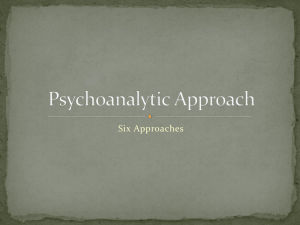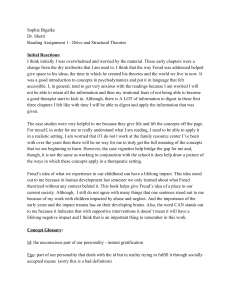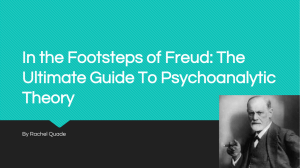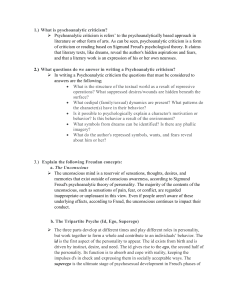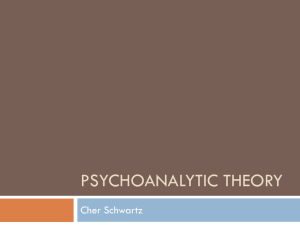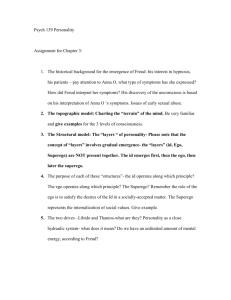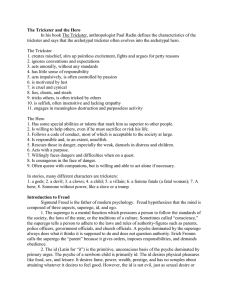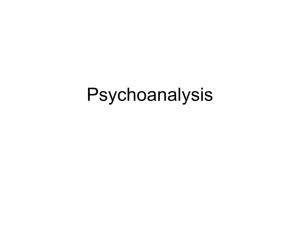Psychoanalytical Theory
advertisement
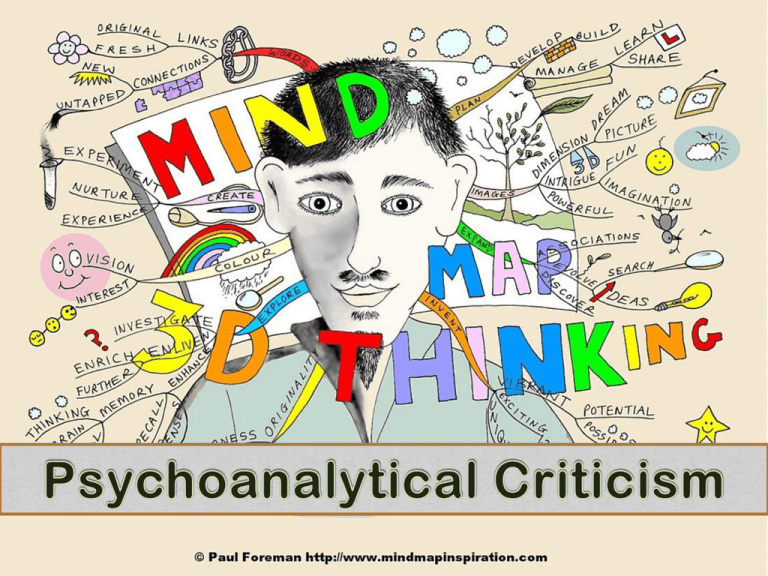
The unconscious activities of our mind Guilt Sexual desires Shameful experiences FEAR 1856 - 1939 Austrian psychiatrist and founder of psychoanalysis Dreams Freud’s belief in the significance of dreams leads to the study of psychoanalytic criticism They are also revealed in creative arts – such as in literature “A work of literature is a fantasy or a dream” Analyzing literature is similar to analyzing dreams – also applies Freud’s theories Manifest content & latent content Manifest content – the surface of a work Latent content – the real desire (hidden) because writers often express their secret unconscious desires and anxieties indirectly in text Psychoanalytic literary critic tries to expose the latent content of a work Latent form – writers often disguise their unconscious mind through principles such as Symbolism - the repressed object represented in disguise Condensation – thoughts or persons condensed into a single image Displacement – anxiety or wish displaced onto the image of another Oedipus Complex Phallic Symbols Central Problems—associated with sexual awakening, dependence/independence conflict, sibling rivalry, inferiority complex, separation/desertion anxiety. In a later generation, psychoanalytic critics analyze characters within the novel using Freud’s famous Personality model. Critics see them as a projection of author’s psyche Personality structure: Id –unconscious part of the psyche that serves as a storehouse of our desires, wishes, and fears. Superego – the conscience, criticizes and prohibits his or her drives, fantasies, feelings, and actions. Ego – the thinking part of both id and superego, the “reality” Id –unconscious part of the psyche that serves as a storehouse of our desires, wishes, and fears. Superego – the conscience, criticizes and prohibits his or her drives, fantasies, feelings, and actions. Ego – the thinking part of both id and superego, the “reality” How do the operations of repression structure or inform the work? Are there any oedipal dynamics - or any other family dynamics - at work here? How can characters' behavior, narrative events, and/or images be explained in terms of psychoanalytic concepts of any kind (for example...fear or fascination with death, sexuality - which includes love and romance as well as sexual behavior - as a primary indicator of psychological identity or the operations of ego-id-superego)? What does the work suggest about the psychological being of its author? What might a given interpretation of a literary work suggest about the psychological motives of the reader? Are there prominent words in the piece that could have different or hidden meanings? Could there be a subconscious reason for the author using these "problem words"?

